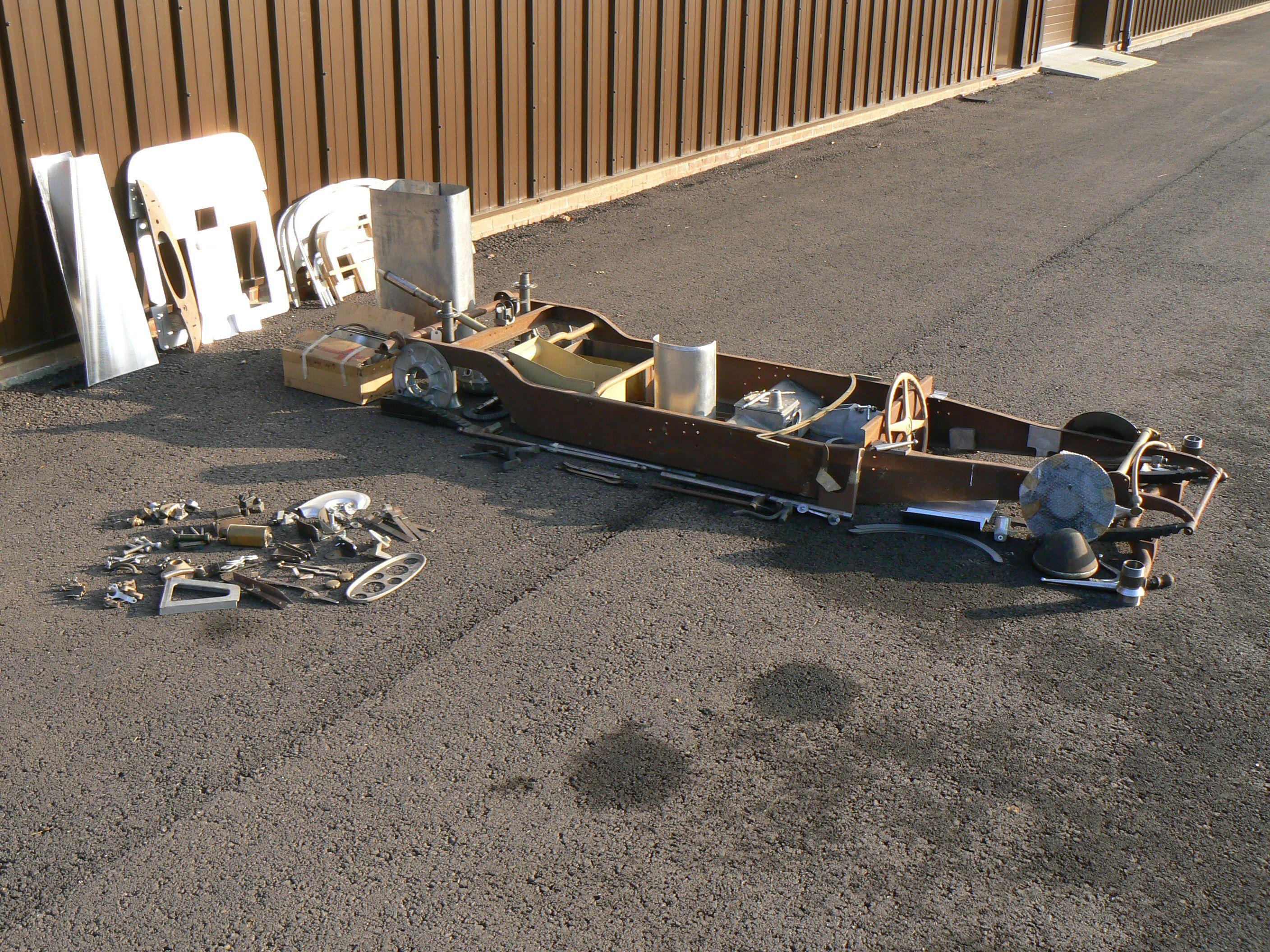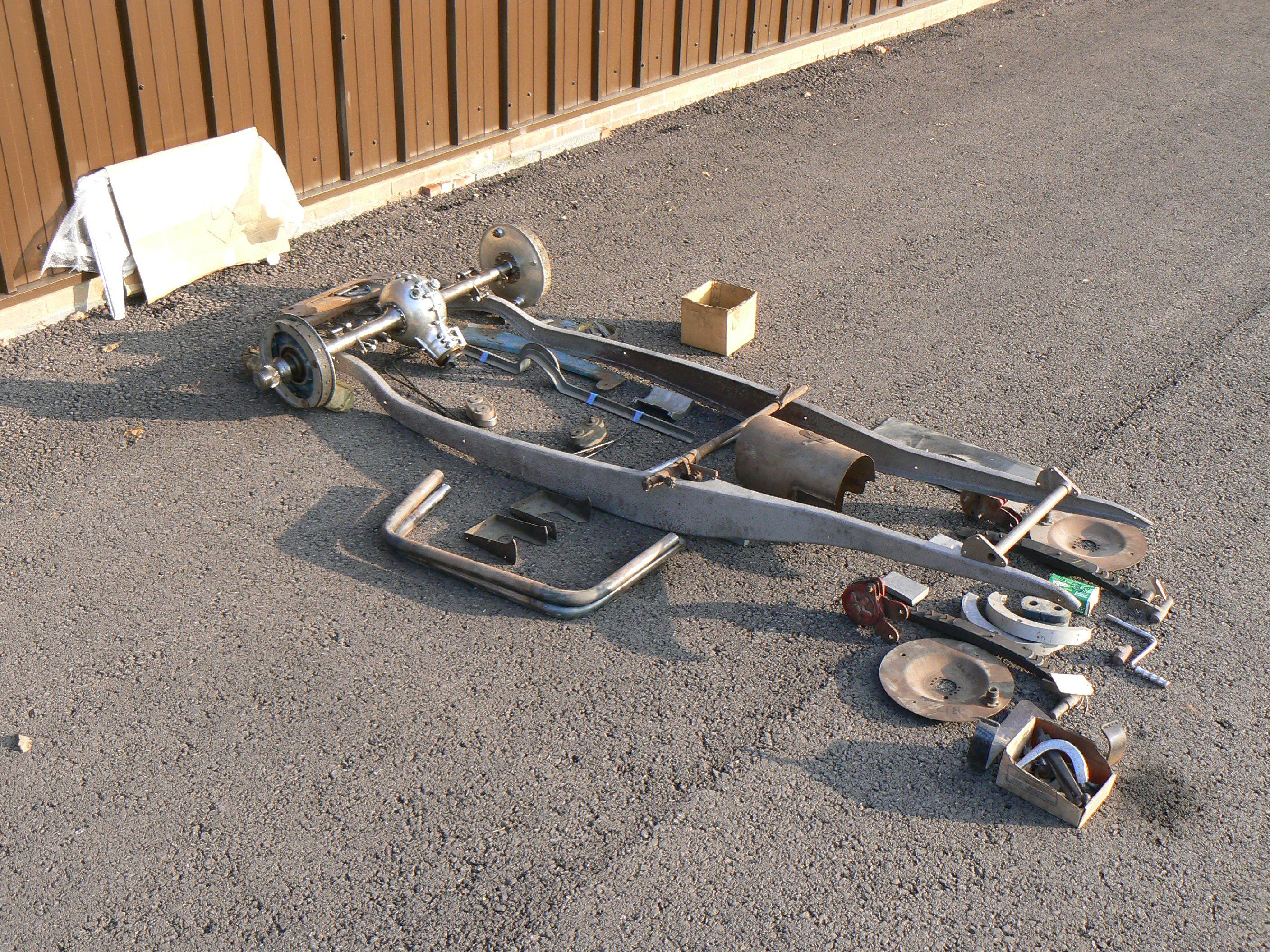Sold by Order of a Direct Descendant ‘It was Geoff Howitt and his operator who won the Squadron’s first victory on Havocs. A waxing moon near to full and the air as clear as crystal made for better sighting - not only for the night fighter, but for the enemy upper and lower rear gunners on the look-out. After the G.C.I. - call sign Cranford - had guided Geoff for some time out to sea, a good blip came up on Reed’s cathode tube, and at 9,000 feet he guided his pilot in from astern, when Geoff had a good ‘visual’ of a Heinkel 111, its crew evidently unaware of their impending fate. An excellent pilot, cool and matter-of-fact, Geoff sent a deadly stream of fire into the bomber; he could see flashes of his De Wilde bullets as they struck home, tearing off bits of metal which flashed past dangerously close to the Havoc. The Heinkel dived steeply and crashed into the sea. One enemy aircraft destroyed.’ Peter Townsend’s Duel in the Dark, refers. The exceptional Second World War night fighter ace’s D.F.C. and Bar group of six awarded to Wing Commander G. L. Howitt, Royal Air Force Volunteer Reserve, who, having honed his skills in Hurricanes of No. 245 Squadron and No. 615 Squadron over Dunkirk and in the Battle of Britain, established himself as a successful night fighter pilot in No. 85 Squadron under Peter Townsend and “Cat’s Eyes” Cunningham - gaining the unit’s first “kill’ in Havocs in April 1941, his subsequent victims included the first Me. 410 “Hornet” to be downed over England and an He. 177 “Griffin” long range bomber, in addition to a brace of V. 1s for good measure, the latter claimed in Mosquitos of No. 456 (R.A.A.F.) Squadron, prior to his taking command of No. 125 Squadron at Coltishall in late 1944 and raising his operational sorties to around 300: and his post-war career was no less distinguished, encompassing as it did much work as a test-pilot for the Air Registration Board and the award of the Queen’s Commendation for Valuable Services in the Air. Distinguished Flying Cross, G.VI.R., with Second Award Bar, the reverse of the Cross officially dated ‘1941’ and the reverse of the Bar ‘1943’; 1939-45 Star, clasp, Battle of Britain; Air Crew Europe Star, clasp, France and Germany; War Medal 1939-45; Air Efficiency Award, G.VI.R., 1st issue (Flt. Lt. G. L. Howitt, R.A.F.V.R.); Queen’s Commendation for Valuable Services in the Air, pair of silver badges, the reverses inscribed ‘R.D. 847363’, in Central Chancery fitted case, mounted as worn where applicable, good very fine (7) £18000-22000 Footnote D.F.C. London Gazette 30 September 1941. The original recommendation states: ’This officer has been engaged on night flying duties since November 1940, and has proved himself to be a relentless and skilful night fighter pilot. Since 7 April 1941, when the Squadron became operational on Havocs, Pilot Officer Howitt had destroyed two and damaged one enemy aircraft. On the night of 9-10 April he attacked and destroyed an He. 111 which crashed in the sea east of Southwold. On the night of 11-12 June he damaged a Ju. 88, the starboard engine of the E./A. being well on fire when he had to break off the combat owing to stoppages in his guns, and on the night of 13-14 July, he destroyed an H.E. 111 east of Clacton. Pilot Officer Howitt has set a splendid example of keenness and devotion to duty.’ Bar to D.F.C. London Gazette 26 October 1943. The original recommendation states: ‘Flight Lieutenant Howitt returned to this Squadron for his second tour of operations in April 1942, since when he has flown a large number of operational sorties, and has destroyed a further four E./A. at night. On the night of 14-15 April 1943, Flight Lieutenant Howitt shot down a Do. 217 after a long chase in which the E./A. took violent evasive action. The Do. 217 crashed near Clacton, one of the crew being killed and the remainder taken prisoner. On the night of 16-17 May 1943, he shot down an Fw. 190 fighter bomber in flames, into the sea south of Hastings.
Sold by Order of a Direct Descendant ‘It was Geoff Howitt and his operator who won the Squadron’s first victory on Havocs. A waxing moon near to full and the air as clear as crystal made for better sighting - not only for the night fighter, but for the enemy upper and lower rear gunners on the look-out. After the G.C.I. - call sign Cranford - had guided Geoff for some time out to sea, a good blip came up on Reed’s cathode tube, and at 9,000 feet he guided his pilot in from astern, when Geoff had a good ‘visual’ of a Heinkel 111, its crew evidently unaware of their impending fate. An excellent pilot, cool and matter-of-fact, Geoff sent a deadly stream of fire into the bomber; he could see flashes of his De Wilde bullets as they struck home, tearing off bits of metal which flashed past dangerously close to the Havoc. The Heinkel dived steeply and crashed into the sea. One enemy aircraft destroyed.’ Peter Townsend’s Duel in the Dark, refers. The exceptional Second World War night fighter ace’s D.F.C. and Bar group of six awarded to Wing Commander G. L. Howitt, Royal Air Force Volunteer Reserve, who, having honed his skills in Hurricanes of No. 245 Squadron and No. 615 Squadron over Dunkirk and in the Battle of Britain, established himself as a successful night fighter pilot in No. 85 Squadron under Peter Townsend and “Cat’s Eyes” Cunningham - gaining the unit’s first “kill’ in Havocs in April 1941, his subsequent victims included the first Me. 410 “Hornet” to be downed over England and an He. 177 “Griffin” long range bomber, in addition to a brace of V. 1s for good measure, the latter claimed in Mosquitos of No. 456 (R.A.A.F.) Squadron, prior to his taking command of No. 125 Squadron at Coltishall in late 1944 and raising his operational sorties to around 300: and his post-war career was no less distinguished, encompassing as it did much work as a test-pilot for the Air Registration Board and the award of the Queen’s Commendation for Valuable Services in the Air. Distinguished Flying Cross, G.VI.R., with Second Award Bar, the reverse of the Cross officially dated ‘1941’ and the reverse of the Bar ‘1943’; 1939-45 Star, clasp, Battle of Britain; Air Crew Europe Star, clasp, France and Germany; War Medal 1939-45; Air Efficiency Award, G.VI.R., 1st issue (Flt. Lt. G. L. Howitt, R.A.F.V.R.); Queen’s Commendation for Valuable Services in the Air, pair of silver badges, the reverses inscribed ‘R.D. 847363’, in Central Chancery fitted case, mounted as worn where applicable, good very fine (7) £18000-22000 Footnote D.F.C. London Gazette 30 September 1941. The original recommendation states: ’This officer has been engaged on night flying duties since November 1940, and has proved himself to be a relentless and skilful night fighter pilot. Since 7 April 1941, when the Squadron became operational on Havocs, Pilot Officer Howitt had destroyed two and damaged one enemy aircraft. On the night of 9-10 April he attacked and destroyed an He. 111 which crashed in the sea east of Southwold. On the night of 11-12 June he damaged a Ju. 88, the starboard engine of the E./A. being well on fire when he had to break off the combat owing to stoppages in his guns, and on the night of 13-14 July, he destroyed an H.E. 111 east of Clacton. Pilot Officer Howitt has set a splendid example of keenness and devotion to duty.’ Bar to D.F.C. London Gazette 26 October 1943. The original recommendation states: ‘Flight Lieutenant Howitt returned to this Squadron for his second tour of operations in April 1942, since when he has flown a large number of operational sorties, and has destroyed a further four E./A. at night. On the night of 14-15 April 1943, Flight Lieutenant Howitt shot down a Do. 217 after a long chase in which the E./A. took violent evasive action. The Do. 217 crashed near Clacton, one of the crew being killed and the remainder taken prisoner. On the night of 16-17 May 1943, he shot down an Fw. 190 fighter bomber in flames, into the sea south of Hastings.















Try LotSearch and its premium features for 7 days - without any costs!
Be notified automatically about new items in upcoming auctions.
Create an alert